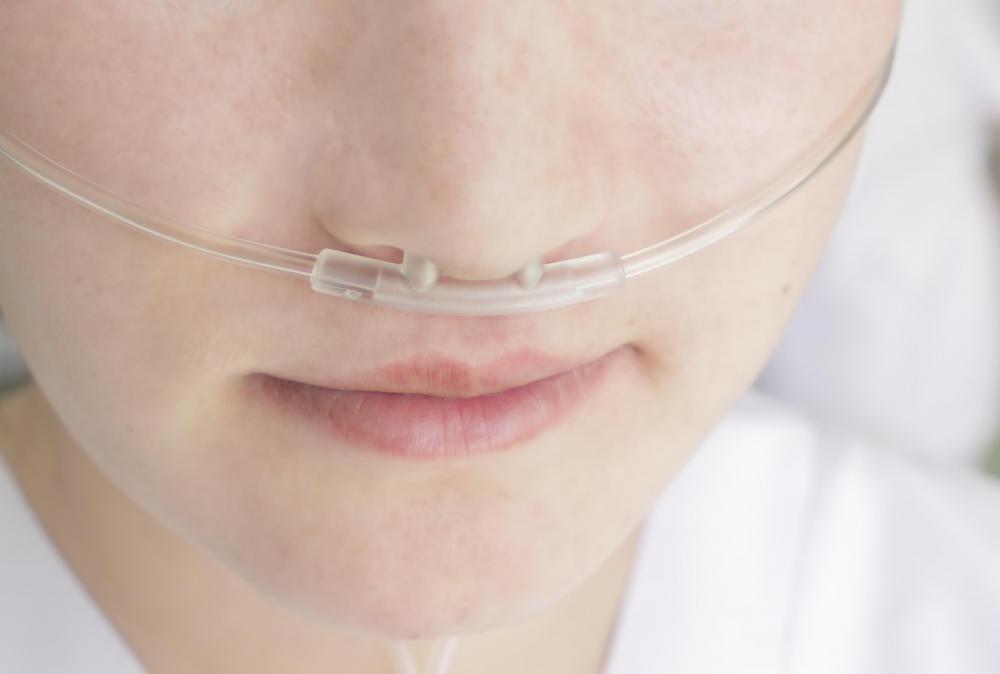At WiseGEEK, we're committed to delivering accurate, trustworthy information. Our expert-authored content is rigorously fact-checked and sourced from credible authorities. Discover how we uphold the highest standards in providing you with reliable knowledge.
What is Hypoventilation?
Hypoventilation is a respiratory problem where people intake air at inadequate levels for meeting metabolic needs, causing the amount of carbon dioxide in the body to rise. It can have a number of causes, ranging from congenital conditions to temporary respiratory depression caused by drug use. Cells in the body create large amounts of carbon dioxide as part of a number of physical processes, and hypoventilation can lead to a very rapid rise of this chemical in the blood, as the cells will keep making it even if it's not being cleared with each breath.
To understand hypoventilation, it is important to know about the process of gas exchange that takes place in the lungs. When people inhale, filling the lungs with a mixture of gases found in the air, oxygen travels across the mucus membranes of the lungs and into the blood, switching places with waste carbon dioxide. In normal respiration, people breathe deeply and often enough to clear the carbon dioxide carried to the lungs for elimination. When people hypoventilate, they breathe too shallowly, too slowly, or both. They are not getting enough oxygen and they also experience a buildup of carbon dioxide in the blood.

A genetic condition known as congenital central hypoventilation syndrome is one possible cause, seen in some people who inherit a harmful gene. Neurological diseases are a very common cause. Strokes and degenerative conditions can involve the area of the brain responsible for regulating respiration, leading to hypoventilation. These patients may need mechanical ventilation to ensure that they get adequate air for their needs.

Another cause is drugs, including some prescription medications, as well as recreational drugs. Opiates are a class of medications well known for depressing respiration, and many other prescription drugs can also inhibit respiration, especially in combination with other medications. Recreational drugs can have similar effects. In both cases, abnormal respiration can develop and the patient may experience complications unless it is addressed by withdrawing the medication and providing treatment.

When hypoventilation occurs, patients can develop cyanosis, where the extremities start to turn grayish. Patients may also say they feel fatigued and can become disoriented and confused. The breathing will be notably slower than usual, and patients may breathe shallowly or make strange sounds while they breathe. If these symptoms develop outside a hospital setting, the patient needs to receive evaluation and medical care as quickly as possible. Prolonged hypoventilation can lead to long-term complications, including damage to the brain and muscles.
AS FEATURED ON:
AS FEATURED ON:













Discuss this Article
Post your comments